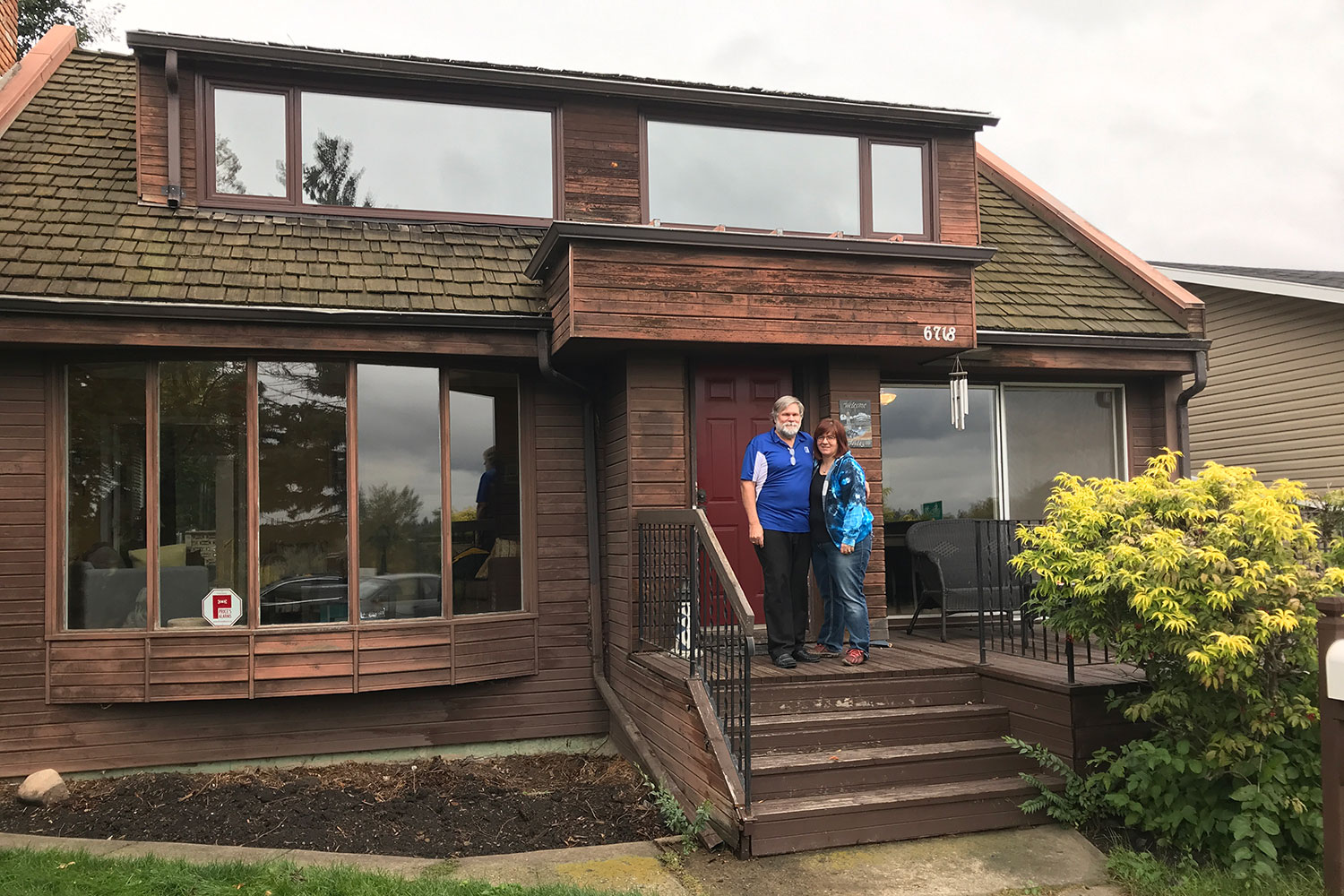
The Finleys hired Jeff Paton of Sunridge Residential to perform an EnerGuide assessment on their 1956 home.
Courtesy David Dodge
Jan. 24, 2018 | David Dodge and Scott Rollans
The EnerGuide enigma
How does your home rate?Most energy-conscious Canadians wouldn't buy a new appliance without checking its EnerGuide label to see how it rates. EnerGuide labels for homes are starting to catch on with energy-efficient new-home builders. But did you know you can get an EnerGuide assessment for your existing home?
Edmonton real estate broker Brian Finley decided to do just that. He hired Jeff Paton of Sunridge Residential to evaluate his 1956 home. Brian had two motives. As a real estate agent, he wanted to learn about energy rating systems for homes. But as a homeowner, he wanted to better understand how his house was using – and undoubtedly wasting – heat and electricity.
Finley realized his house, at 61 years old and counting, would show drastic room for improvement. For the EnerGuide assessment, Paton began with a visual inspection – measuring the home and counting the windows. Once inside, he quickly uncovered some obvious shortcomings, such as the old-fashioned wood shavings that insulated Finley's attic.
"Cellulose or fibreglass insulation would do a much better job and have a higher value per inch," he said.
Next, Paton unpacked his technical gear. The blower door test involves sealing the front door with a red fabric and de-pressurizing the home with a fan. This helps Paton calculate the air exchanges per hour of the home. Brian's 1956 home is very leaky, at 9.6 air changes per hour. A typical new home today might come in at about 2.5 air changes per hour, while a super-insulated, net-zero home would come in at less than one air change per hour.
"This is a great tool that we can use to understand how the energy is used in your home." - Jeff Paton, Sunridge Residential
While the home was depressurized, Jeff pulled out his cool infrared camera to identify areas where the house was losing heat – places where the air was leaking, or insulation was disturbed. Looking at the camera, you could see the wispy shape of cold air seeping into the house via the door, windows, joists, plugins, fireplace, attic hatch and other places.
After crunching the numbers, Paton generated a renovation upgrade report, focusing on specific steps Finley can undertake to reduce his home's energy consumption. "In this instance, this home is losing 29 per cent of its heat through air leakage," said Paton. "Another 25 per cent of it through the basement foundation, and the rest is made up through the attic, main walls, exposed doors and windows."
And, of course, Paton generated an EnerGuide rating number for the home. In most of Canada, the home EnerGuide rating reflects the number of gigajoules a house will consume in a year. Obviously, the lower the number, the better. A net-zero home would earn an EnerGuide rating of zero. A typical new home has a rating of about 146 gigajoules.
Where did Brian's home come in? As he suspected, the news was not good. "We can see on here that your energy rating in gigajoules per year is 236," said Paton. "That's a significant amount of energy, but it's not uncommon for this era of construction in the 1950s. And this is a great tool that we can use to understand how the energy is used in your home."
The EnerGuide label tells Finley his home uses 236 gigajoules of gas and electricity each year. If his home were built today to current code, its rating would be 116 gigajoules – a number Finley could reach if he completes all the recommended renovations listed in Paton's report. It should be noted that the upgrades for this 1956 home would be quite expensive. But Finley now knows what steps he can take, and what gains he can expect to see from each one. He is already planning to add insulation to his attic.
Perhaps the most insightful report you receive is the Homeowner Information Sheet, which breaks down where your home uses energy and where it loses heat. Finley's 1956 home consumes most of its energy (90 per cent) heating the air and water in the home.
It's very important to recognize that the EnerGuide assessment does not look at behaviour. You can cut your energy use with a few simple, low-cost changes, and you can perform your own sleuthing to find and eliminate the biggest energy hogs in your home.
An EnerGuide home energy assessment will run anywhere from $300 to $750, and some municipalities offer generous rebates to help cover the cost. Visit the Natural Resources Canada website to find an EnerGuide advisor near you.
Tagged: EnerGuide | Feature | Green Living | Guest Column | Natural Resources Canada | Net-zero




